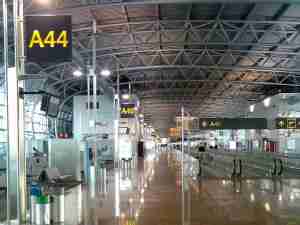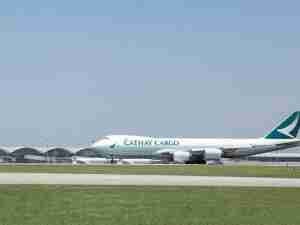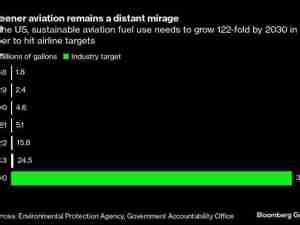Emirates Group trimmed its annual loss and predicted a return to profit this year as the world’s biggest long-haul airline taps a recovery in demand from the coronavirus pandemic.
The Dubai-based carrier had a loss of 3.8 billion dirhams ($1 billion) in the year through March, it said Friday. That compares with a loss of 22.1 billion dirhams in the previous 12 months, its first in more than three decades.
“We expect the group to return to profitability in 2022-23, and are working hard to hit our targets, while keeping a close watch on headwinds such as high fuel prices, inflation, new Covid-19 variants, and political and economic uncertainty,” Chairman Sheikh Ahmed Bin Saeed Al Maktoum said.
Global travel is beginning to rally as the relaxation of Covid restrictions releases pent up demand. Emirates has brought back idled planes, restored abandoned routes and lifted staffing to 80% of pre-pandemic levels, though new lockdowns in China are a drag on a business that specializes in linking Asia, Africa, Europe and the Americas via its hub in the Gulf.
The state-owned company’s passenger count tripled to 19.6 million passengers in the 2021-22 fiscal year, though that was still only one-third of the number prior to the crisis.
Seat capacity rose 150% as aircraft including the largest fleet of Airbus SE A380 superjumbos returned to service, helping to spur group revenue 86% to 66.2 billion dirhams.
Repayments
“Business recovery picked up pace, particularly in the second half,” Sheikh Ahmed said. “Robust customer demand drove a huge improvement in our financial performance compared to our unprecedented losses of last year.”
The revival allowed Emirates to increase its cash balance by 30% to 25.8 billion dirhams as it prepares to begin repaying the 15 billion dirhams in state funding that helped it ride out the crisis. The chairman has indicated that should begin this year in the form of dividend payments to the government.
Dubai International airport, where Emirates is based, reported its busiest quarter since the start of the crisis in the first three months, attracting 13.6 million passengers. The hub may reach pre-Covid levels earlier than expected, Dubai Airports Chief Executive Officer Paul Griffiths said Wednesday.
Numbers have included visitors from Russia, which Emirates continues to serve after the United Arab Emirates held back from following sanctions that have closed down flights by many other operators following the invasion of Ukraine.
Boeing Delay
Emirates said that its order book of 197 aircraft remains unchanged “at this time.” That backlog includes more than 100 of Boeing Co.’s new 777X widebodies, first deliveries of which have slipped five years behind schedule.
Emirates President Tim Clark said in November that the carrier, which was due to get its 777Xs from June 2020, would conduct a fleet “reset,” without indicating what that might mean. It had 262 aircraft at the end of March.
The company’s Dnata ground-handling and services arm returned to profit in the period, buoyed by an international business that accounts for almost two-thirds of revenue from locations including London Heathrow, Amsterdam Schiphol and Sydney airports.
The unit was tipped as a potential spinoff candidate when Emirates was exploring potential for a public listing prior to the pandemic.
The Emirates workforce stood at just over 85,000 in March and the group is still hiring across all divisions in an attempt to keep pace with the travel rebound.










